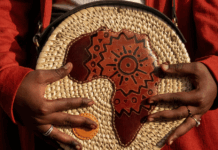Ford Motor Company of South Africa today celebrates World Rhino Day though its support of Saving the Survivors – a conservation project that provides veterinary support to poached rhinos.
In 2010, WWF-South Africa announced 22 September as World Rhino Day in an effort to encourage global awareness for the plight of the rhino and to celebrate the five species of rhino in the world. Since its inaugural year, World Rhino Day has grown to become a global phenomenon, uniting NGOs, zoos, cause-related organizations, businesses, and individuals across the globe.
The rhino is one of the oldest mammals in the world, first appearing some 50 million years ago, however, today the species is threatened. The Black, Javan, and Sumatran rhinos are all classified as critically endangered and the Indian rhino is classified as vulnerable. Only the White Rhino is classified as not threatened – although there are only three Northern White Rhino’s currently alive in the world.
In South Africa, over 1000 rhinos have been poached each year since 2013, and this year is on course to be no different. According to the Department of Environmental Affairs, 529 rhinos have been poached as of 24 July this year.
“Rhinos are one of the last remaining pachyderms on the planet, together with elephants and hippos, and we are losing over 1000 rhino a year, so it is extremely important to treat and save every rhino that we can,” says Dr Johan Marais, founder of Saving the Survivors.
Saving the Rhino
Established in 2012 by Dr Marais, Saving the Survivors provides support to injured rhino, elephant and other species through specialist veterinary expertise, either in own capacity, or by assisting other veterinarians in the field, and to channel funding to give these animals the best possible care available. Due to the increase in rhino poaching, Marais says about 80% of the work Saving the Survivors does involves poached or injured rhinos. The project treats 60-80 rhino a year.
Saving the Survivors team spends a lot of time on the road attending to injured animals in the bush. To support their efforts, the Ford Wildlife Foundation (FWF) recently handed over two Ford Ranger bakkies that will enable Saving the Survivors to store and transport the technical equipment needed to provide treatment to animals in their natural environment.
“It is hugely stressful for wild animals to be captured and moved, and the success rates of the procedures dramatically decreases if the animals are removed from their environment,” explains Dr Marais.
One of the rhinos that Saving the Survivors is currently treating is a White rhino bull named Seha. In September 2016, Seha was severely injured after a vicious attack by poachers. Both of his horns were removed and he was the only survivor after five rhinos were poached on the same property in the North West province. However, following initial treatment by Saving the Survivors, Seha survived, and even though he still has a wound a year later, he is recovering and was recently relocated to a bigger camp.
World Rhino Day Facts
Rhinos are one of South Africa’s most beloved animals. Part of the Big Five, they are even featured on the R10 note. Here is a list of facts you might not know about rhinos:
- There are five species of rhino: White rhino (Southern Africa), Black rhino (Sub-Saharan Africa), Indian rhino (Northern India), Javan rhino (South-East Asia), and the Sumatran rhino (South-East Asia).
- The Black rhino is critically endangered with approximately only 4,800 surviving in the wild.
- Rhinos have poor eyesight but good sense of smell and hearing.
- A group of rhinos is called a “crash”.
- Black rhino are the fastest species of rhinoceros, able to reach a top speed of 55km/h.
- White rhino can weigh up to 3,500kg and are the second largest land mammal after the African Elephant.
- A rhino pregnancy can takes 15-16 months.
- The name rhinoceros means “nose horn”.
- Rhino have skin that can be as thick as 5cm, but it is sensitive to sunburn and insect bites, which is why they like to wallow in mud.
- Rhino horns are made from keratin, the same substance that fingernails and hair are made from.
- White and Black Rhino are both grey. They can be differentiated by the shape of their mouths. White rhino have wide mouths for eating grass, while Black rhino have hooked lips for browsing branches and shrubs.
- Rhinos have been around for over 50 million years
Ford Wildlife Foundation
For the past 30 years, FMCSA has been actively involved in the conservation of wildlife and ecosystems in South Africa. To date, FMCSA has invested almost R40 million to support more than 170 conservation projects. In 2014, FMCSA established the Ford Wildlife Foundation (FWF) – a body that consists of FMCSA, members of Ford’s dealer network, and experts from the wildlife conservation sector.
The Ford Wildlife Foundation is unique as it does not provide a cash donation to the conservation projects it supports, instead Ford’s partner organisations are equipped with Ford Rangers. The vehicles provided are used to help project operations, such as transporting field equipment, helping vets reach sick or poached animals, or translocating the animals themselves. The vehicles operating in all Ford Wildlife Foundation projects are monitored and serviced by Ford’s extensive dealer network to ensure they operate at peak efficiency.
Since 2014, the FWF has invested a further R8 million in vehicles and vehicle services to support 23 conservation projects in South Africa. In 2017 alone, nine Ford Rangers have been handed over to eight partner organisations to support their work in the field.



























